
Before investigating instances of shot, montage, rhythm and sequence in the spatial city I had to refine my 3D model and set up a grasshopper file. The main aim was to set up a gh file that could let me add multiple layers to the city that in turn interact with each.
First, I contoured all the surfaces in the pre-existing model of the city. You can specify the height at which you contour the surfaces and this produces the outline of all the buildings and the structures at that height. It also delineates the space we have around the buildings.

Next, the contour shapes are scaled from their centroids. This is to allow enough space around the existing buildings when constructing additional layers of the city. This allows light down to the old city.

The next step is to construct a grid or framework on which the new layer is built. This new framework has to be related to the framework of the old city. I exploded the shapes that were previously contoured and scaled (which represents the layout of the old city to an extent). These exploded lines are then extended infinitely (almost), which results in a criss-cross pattern. Although the pattern may look disorganized, each line is actually coincident with at least one edge of a structure in the old city.
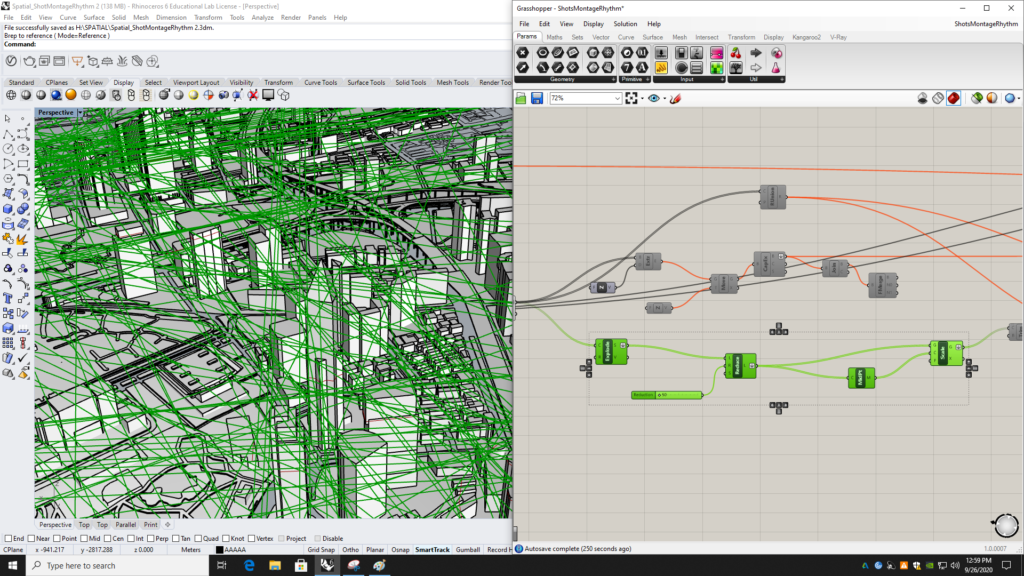
The next step was to trim the crisscrossing lines around the existing buildings. This ensures that the grid for the new layer does not collide with the structures of the old city.

The next step was to lay out the surface on which the structures will be constructed.

The surface is then cut into multiple pieces by the crisscrossing grid. This produces multiple surface fragments which can actually serve as individual units of structure in the new layer.
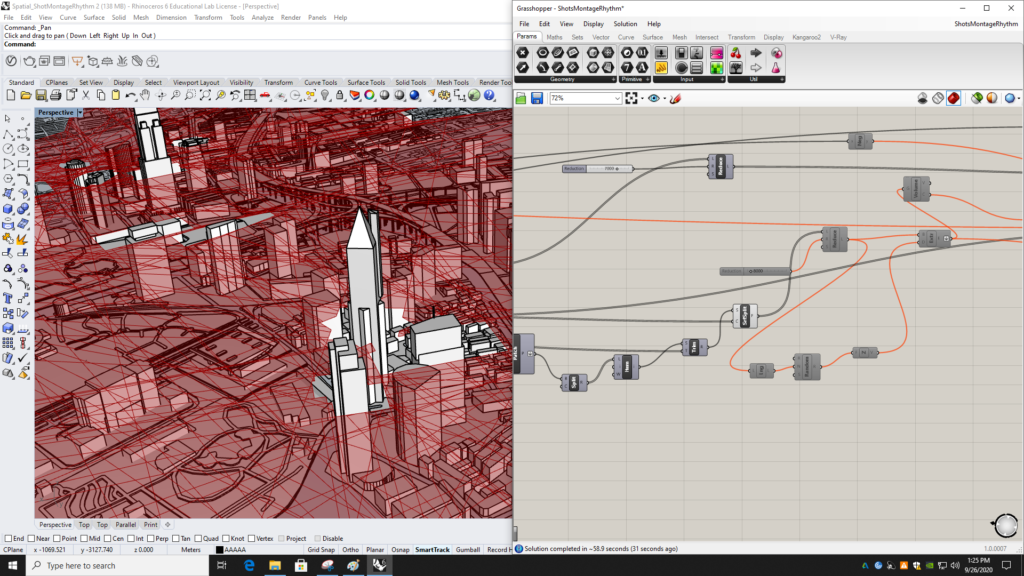
We can adjust how dense each layer is by reducing the number of surface fragments that can be developed into structure.
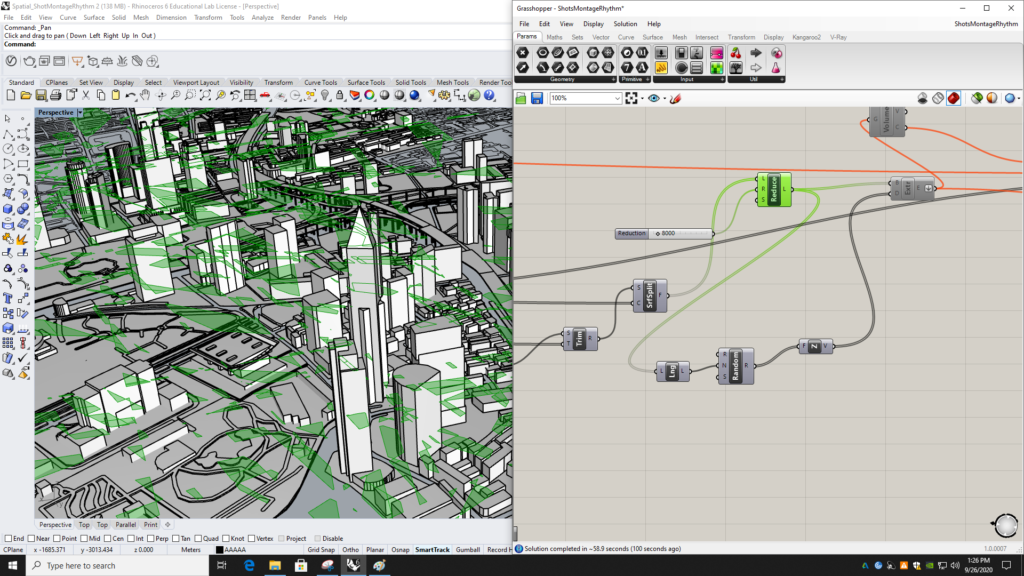
The next step is to then extrude the columns that would support the new layer of the city. The columns are extruded at random intersection points on the grid. We can also adjust the density of the columns.

The structures are then extruded to a range of random heights both above and below a datum (which is the height at which the buildings were contoured)
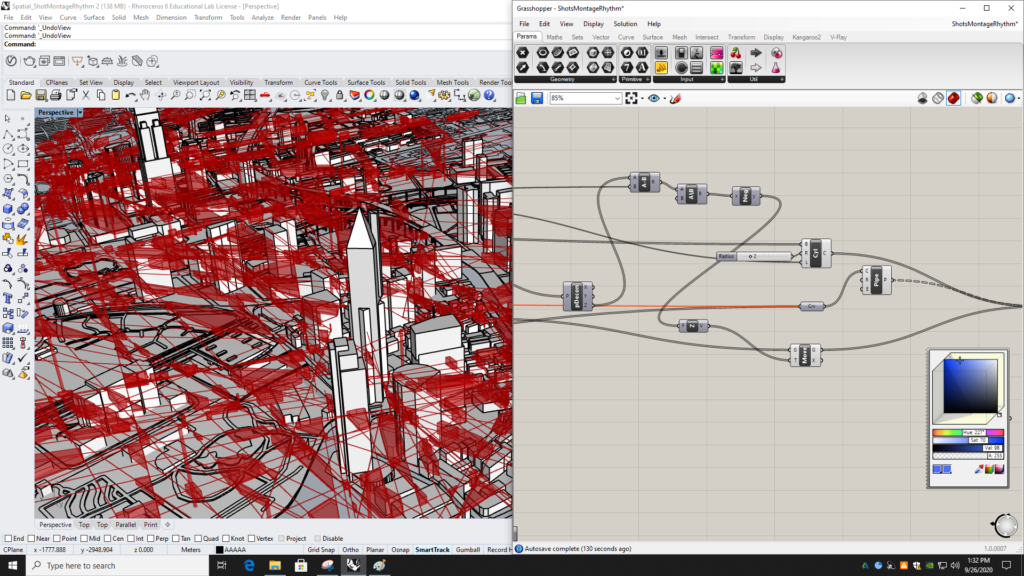

Multiple layers can be added by copying and pasting a set of commands from the script and then specifying the new height for additional layers



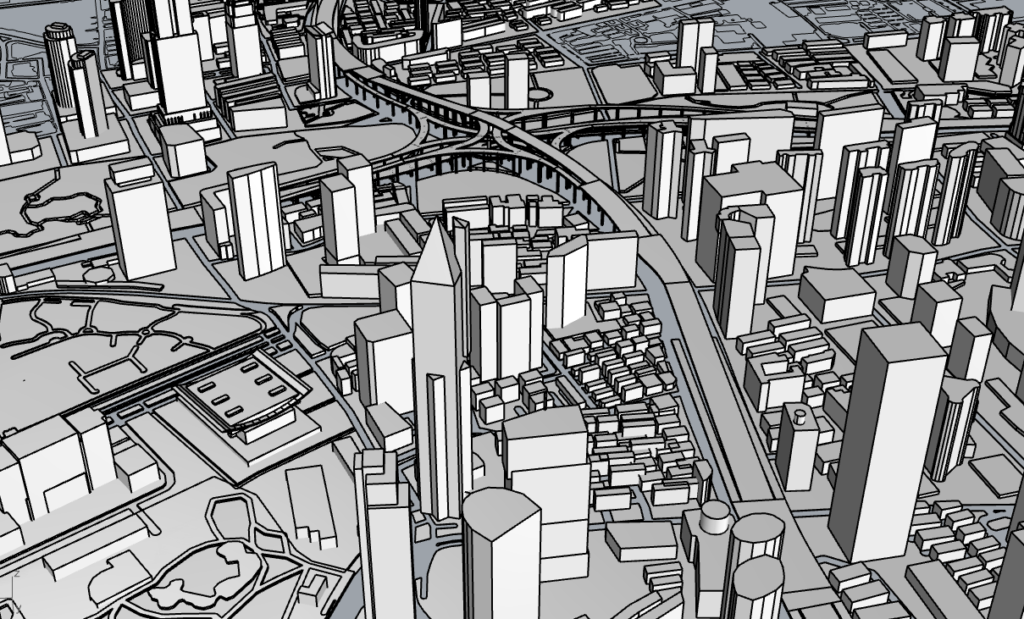
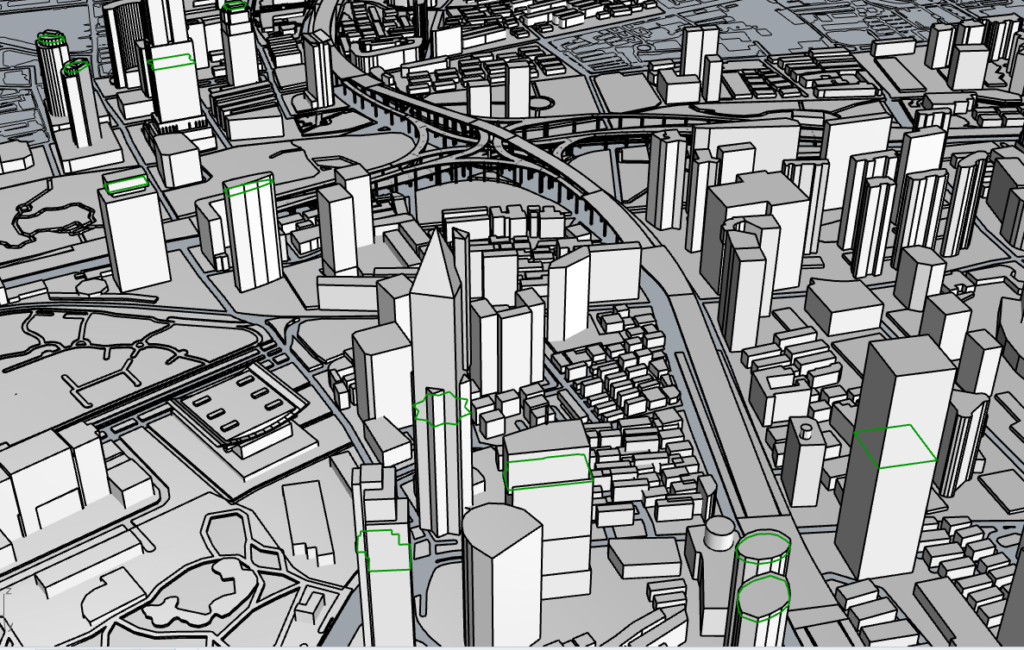


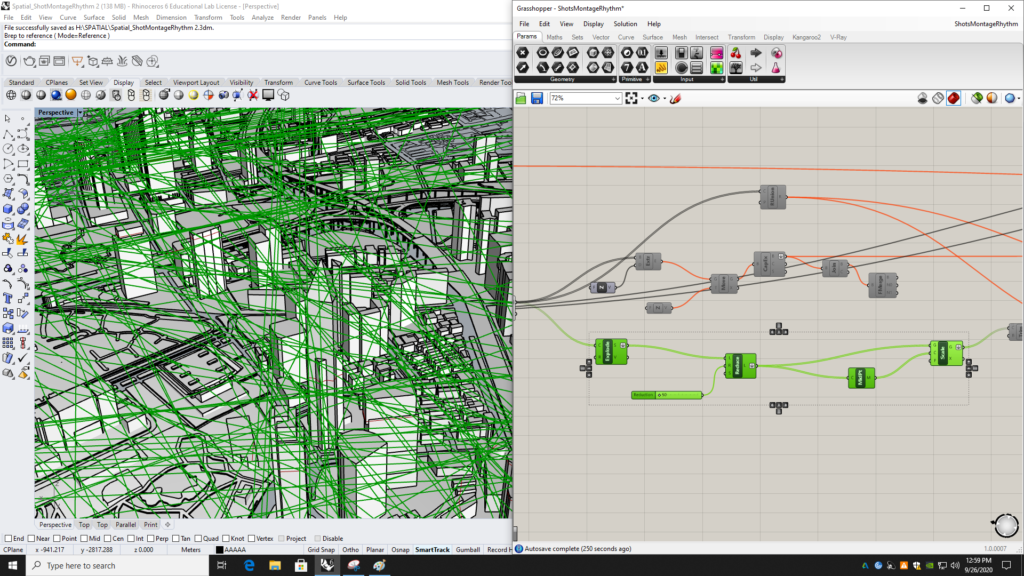


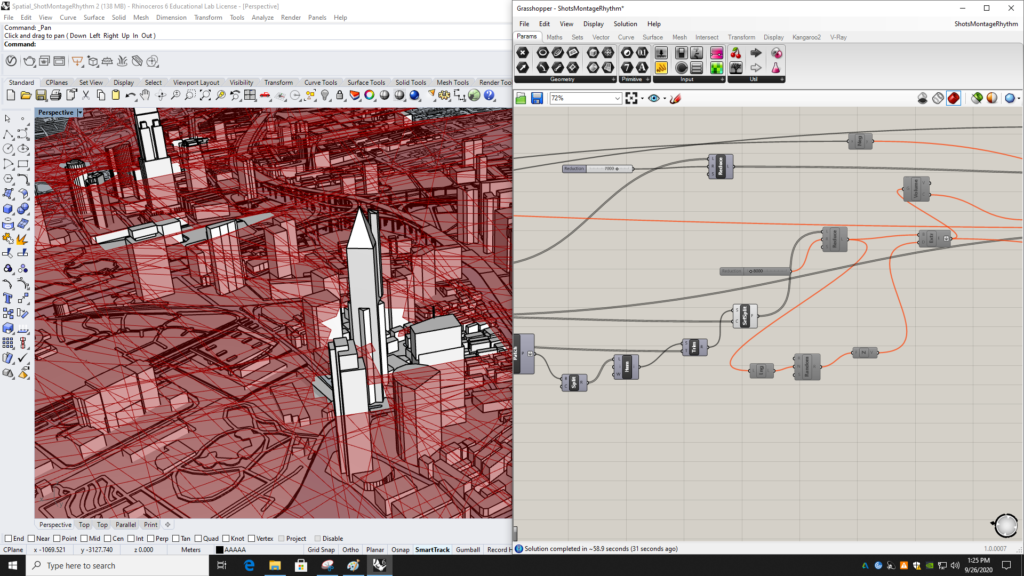

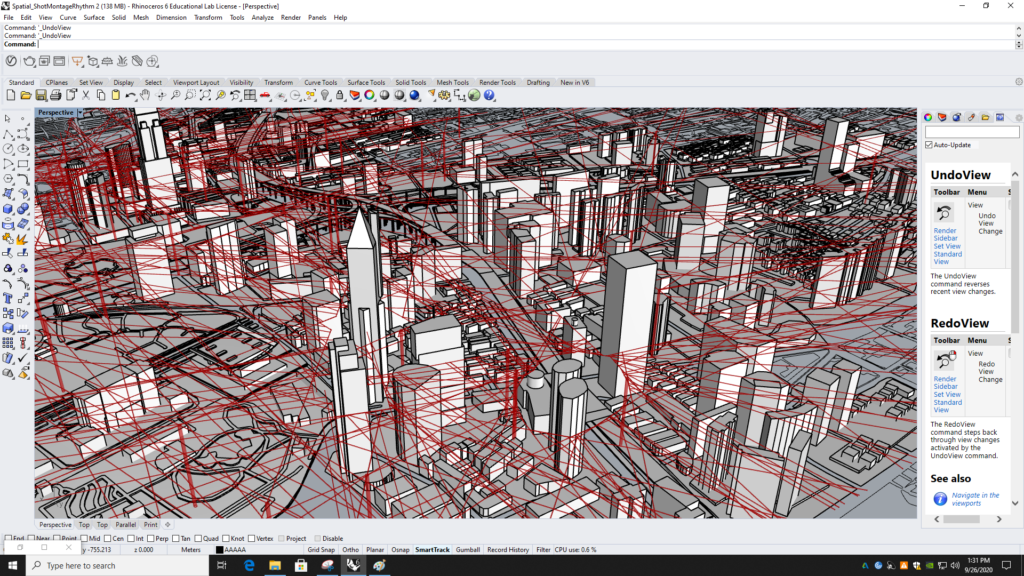

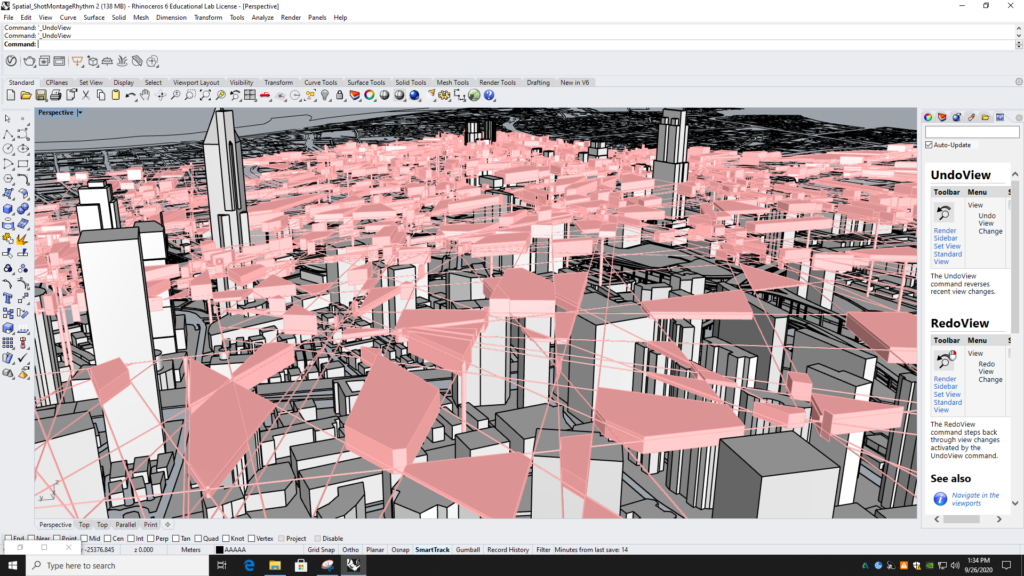
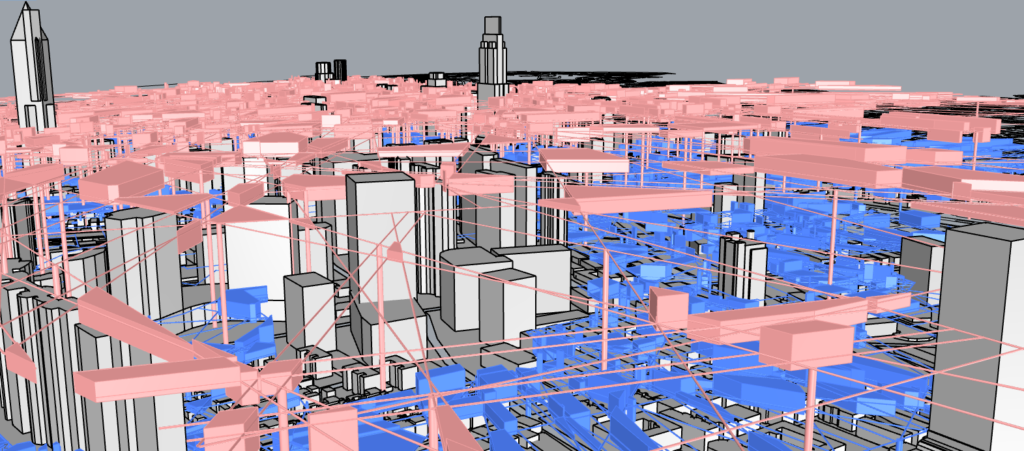
I like that we can now shoot off a bunch of iterations of your assemblages. Of course, for Monday, make sure you develop typologies of frames/montages/sequences that examine a ‘tighter’ slice of your forms. It would also be interesting to a generative ‘city’ rather than the base you’re using – in this way, we can understand another montage scale between city and ‘building.’